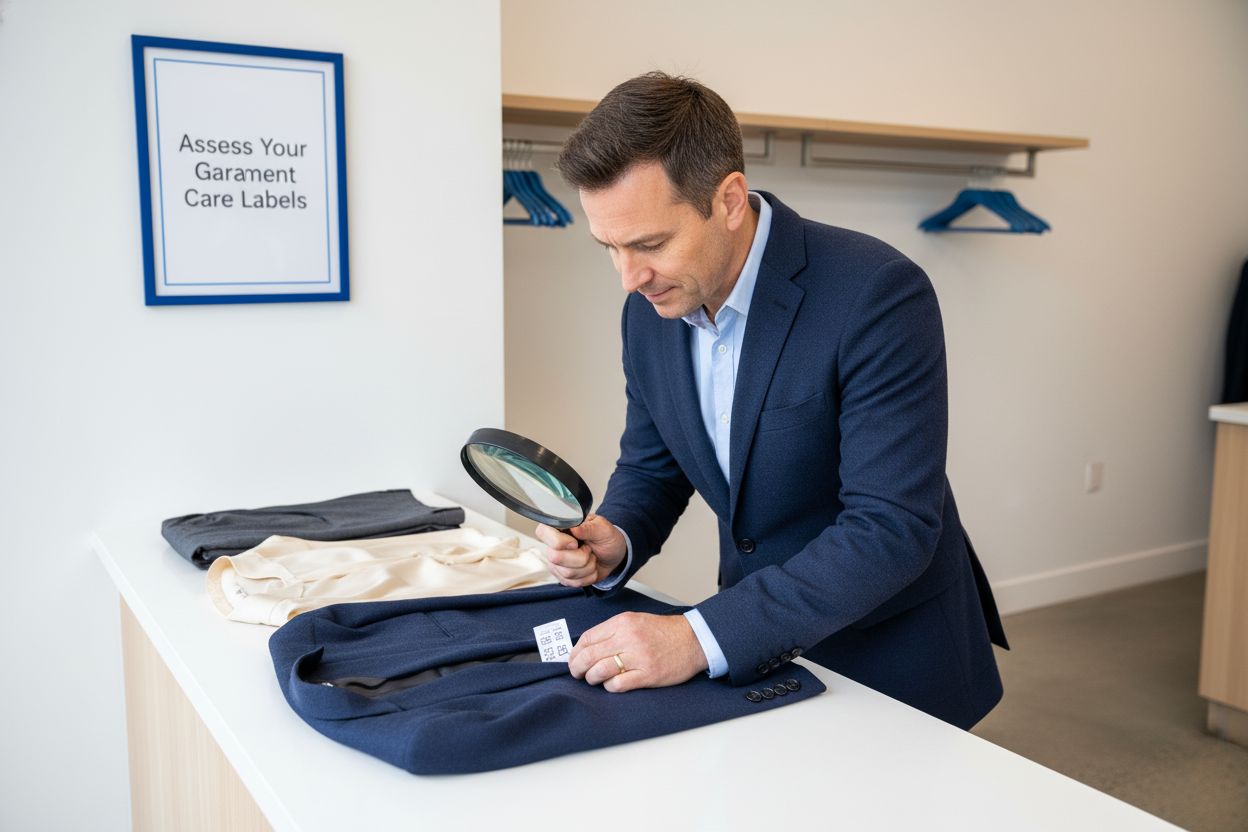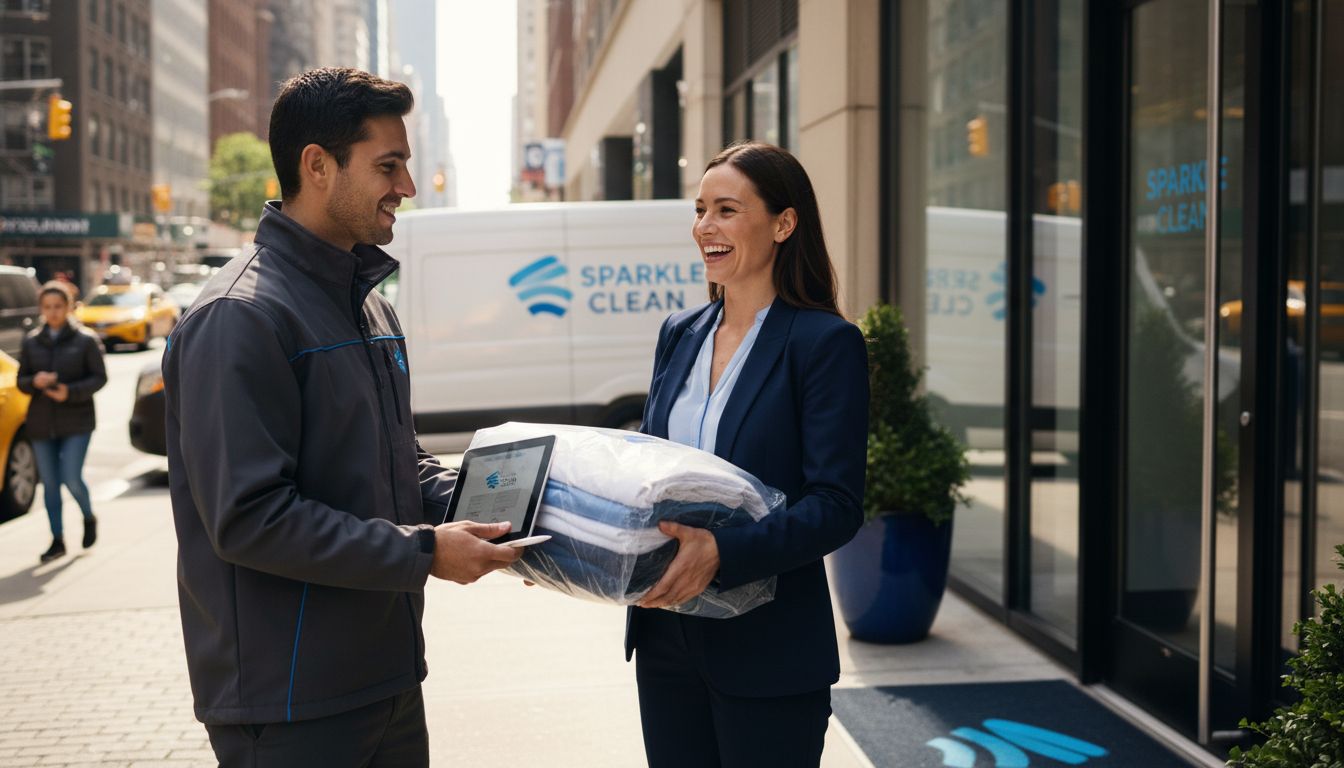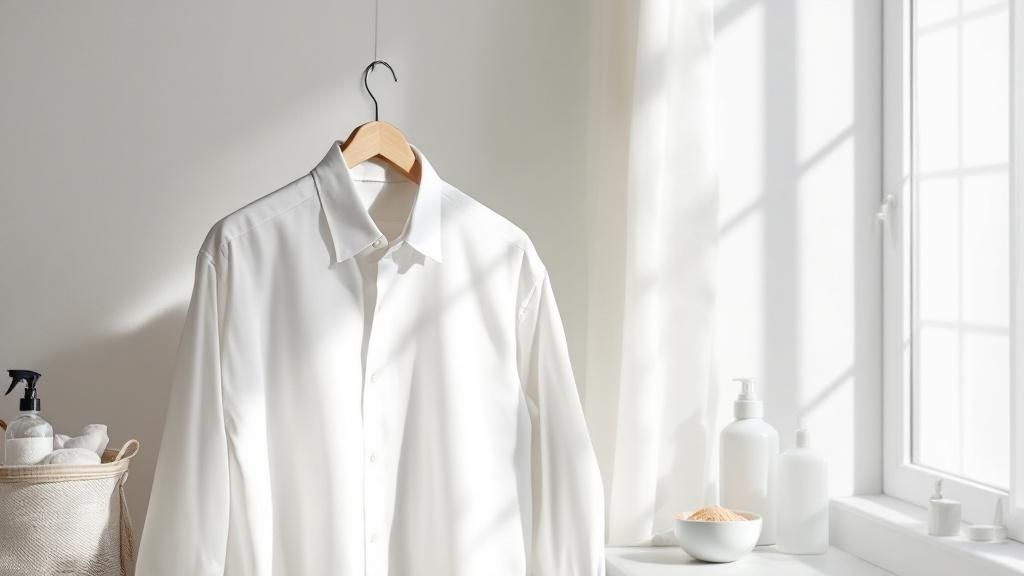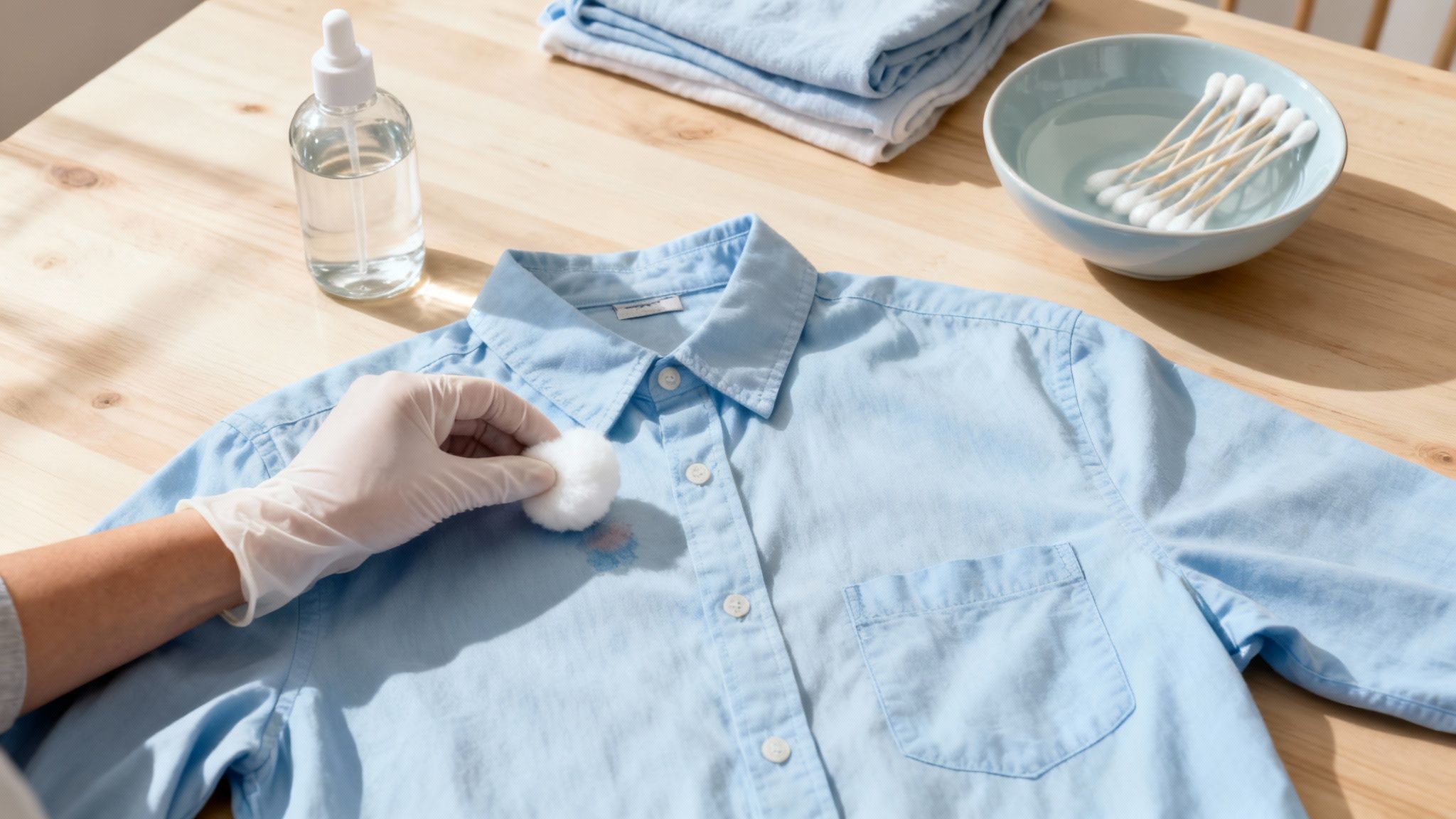A Practical Guide to Leather Clothing Care

Taking care of your leather clothing isn't just about cleaning up a spill here and there. It’s what transforms a great purchase into a piece you'll have for life. Think of leather like skin—it needs a little attention to stay supple, avoid cracking, and look its best for years to come. That means getting into a routine of cleaning, conditioning, and storing it the right way.
Why Bother With Proper Leather Care?

When you decide to buy a quality leather jacket or pair of trousers, you're making a real investment. These aren't just any clothes; they're made from a natural material that’s been carefully tanned to be both tough and flexible. But that durability isn't guaranteed forever. Without some basic maintenance, leather is surprisingly vulnerable to everyday life.
Here's the deal: leather is porous. It can soak up dirt, body oils, and moisture from the air, all of which slowly break down its natural fibers. That forgotten coffee splash or a winter spent hanging in a damp closet can cause real, irreversible damage. Before you know it, you’re looking at a stiff, discolored, or even mildewed garment.
Protecting Your Investment
Good care isn't just for looks; it's about protecting the value and integrity of your clothing. A well-maintained leather jacket doesn't just look incredible, it also performs better, giving you the comfort and protection it was made for. Letting it go is no different than neglecting any other fabric, which we know leads to permanent wear. If you're curious, you can explore our guide on understanding fabric wear and tear to see how different materials age over time.
It's clear people are catching on. The demand for specialized products has boomed, with the global market for leather cleaners and conditioners expected to hit an estimated USD 2,500 million by 2025. This tells us one thing: owners are getting serious about preservation. You can check out more stats on this trend and the leather care market on datainsightsmarket.com.
The best strategy is a proactive one. Get into a simple routine for cleaning, conditioning, and storing your leather. You'll stop damage before it even has a chance to start, making sure those favorite pieces stay in your wardrobe for decades.
Different Leathers Need Different Approaches
You wouldn't treat a silk blouse like a pair of jeans, and the same goes for leather. The approach you take for a rugged, full-grain bomber jacket is completely different from what a delicate suede skirt needs.
- Full-Grain Leather: This is the toughest stuff, famous for showing its natural texture. It absolutely loves a good conditioning session to keep it from drying out.
- Suede & Nubuck: These have that soft, velvety feel, which also makes them super sensitive to water and stains. For these, you'll need special brushes and protective sprays.
Knowing the difference is the first real step to great leather care. It gives you the confidence to handle any piece like a pro.
How to Clean Your Leather Garaments at Home
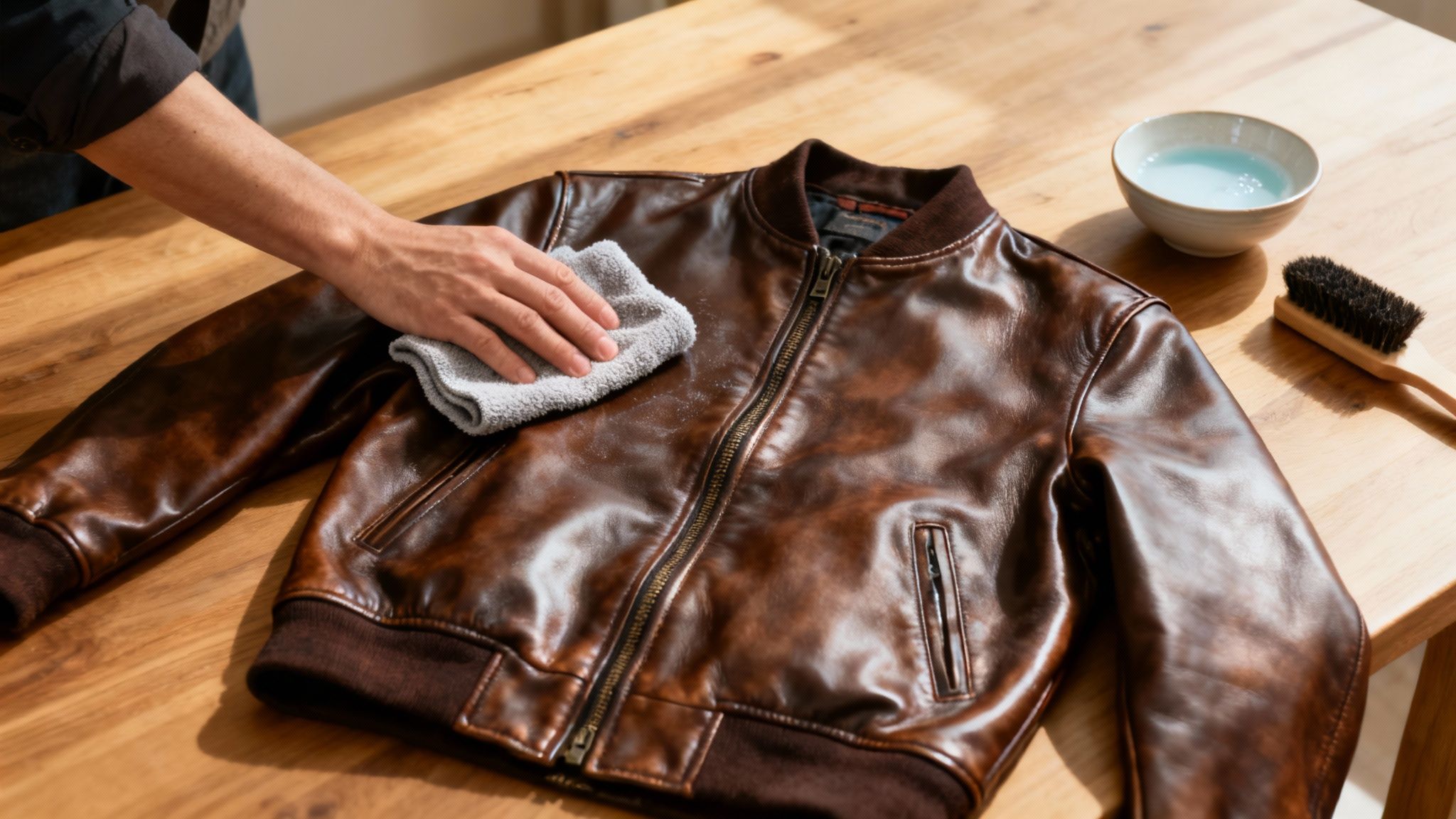
Taking care of your leather at home doesn't have to be a major production. In fact, most of the time, all you need for basic upkeep is a quick wipe-down with a dry microfiber cloth. This little bit of effort goes a long way, lifting surface dust before it can grind into the leather’s pores and cause damage over time.
For moments when your jacket needs a bit more than a simple dusting, a gentle cleaning solution is your best friend. Just mix a few drops of a mild soap—think baby soap or a cleaner made specifically for leather—with some distilled water. Get a soft cloth, dip it in, and then wring it out until it’s just barely damp. From there, a gentle wipe in a circular motion is all it takes.
The Gentle Approach to Spot Cleaning
We've all been there. You're enjoying your morning coffee and a stray splash lands right on your favorite bomber jacket. The golden rule? Act fast. Don't let that spot settle in and make itself at home. Grab a clean, dry cloth and blot the spill right away to soak up as much as you can.
After you've blotted up the excess liquid, you can turn to that mild soap solution we just talked about.
- Test First: Before you go to town on a visible area, always do a patch test on a hidden spot, like an inside seam. This quick check ensures your solution won't cause any unexpected discoloration.
- Wipe, Don't Scrub: Use your lightly damp cloth to gently wipe the stain, working from the outside of the spot inward. This simple trick keeps the stain from spreading.
- Rinse Carefully: Once the spot is gone, take a fresh cloth dampened with only distilled water and wipe the area to remove any lingering soap residue.
This careful, targeted approach is what leather care is all about. Scrubbing too hard is a surefire way to damage the finish. While these tips are great for most situations, different pieces sometimes need different techniques. For a deeper dive, especially on accessories, check out this professional guide to cleaning leather bags.
Quick Guide to At-Home Leather Cleaning
To make things even simpler, here's a quick rundown of the dos and don'ts. Think of this as your cheat sheet for keeping your leather looking its best without causing accidental harm.
Following these simple rules will help you confidently handle most minor cleanups and keep your leather garments in fantastic shape for years to come.
The Crucial Art of Drying Leather
Honestly, how you dry your leather is just as important—if not more so—than how you clean it. Never, under any circumstances, reach for a hairdryer or place your wet leather garment near a radiator or heat vent. That kind of direct, intense heat will suck the natural oils right out, leaving the leather stiff, brittle, and prone to cracking.
The right way is the patient way. Lay the garment flat on a clean towel or, better yet, hang it on a wide, padded hanger that can support its weight without stretching the shoulders. Let it air dry naturally at room temperature, making sure it’s out of direct sunlight. This slow and steady process allows the leather to dry evenly while holding onto its essential moisture and softness.
Remember that leather is a skin. Just as hot air can damage your own skin, it will irreversibly harm the fibers of your garment. Patience during the drying phase is your best tool for long-term preservation.
While these at-home methods are perfect for routine maintenance and small mishaps, some jobs are best left to the professionals. Deep-set stains, delicate materials like suede, or a piece that's just seen better days all benefit from an expert's touch. When you're in doubt or dealing with a truly valuable item, bringing it to us is the safest bet. You can learn more about our specialized leather dry cleaning services for those times when you need to call in the pros.
Conditioning to Keep Leather Supple

Think of leather conditioner as a high-quality moisturizer for your favorite garments. Leather is, after all, a natural skin. It contains essential oils and fats that keep it soft and flexible. But over time, exposure to air, light, and temperature changes causes those oils to evaporate, leaving the fibers dry, brittle, and vulnerable to cracking.
Conditioning is the non-negotiable step in leather clothing care that puts that moisture back in. It works its way into the pores to restore flexibility, bring back that natural sheen, and add a layer of protection against future damage. Without it, even the most beautifully made leather jacket will eventually become stiff and uncomfortable.
Choosing the Right Leather Conditioner
Not all conditioners are created equal, and the best one for the job really depends on the garment. Knowing the difference between the main types will help you pick the right one.
- Creams: These are your all-rounders and probably the most user-friendly. They give a nice balance of moisture and protection without feeling greasy, which makes them perfect for jackets, pants, and most finished leathers.
- Oils: Think of mink oil or neatsfoot oil as intensive-care treatments. They're fantastic for bringing very dry, stiff leather back to life—like old work boots or a motorcycle jacket that's been stored for too long. Just use them sparingly, because a little goes a long way and too much can darken the leather.
- Waxes: Conditioners with a wax base, like beeswax, are all about protection. They create an excellent water-resistant barrier, making them a great choice for boots and outerwear that will be seeing some weather. They might not penetrate as deeply as creams or oils, but they're champions at sealing the surface.
A quick word of caution: Always check the product label and try to avoid conditioners that contain silicones or petroleum-based chemicals. These can clog the leather's pores, which stops it from breathing and can actually make it dry out faster in the long run.
The Art of Applying Conditioner
Applying conditioner is pretty straightforward, but a little bit of technique makes all the difference. The goal is to apply a thin, even layer that the leather can completely soak up.
First things first, make sure your garment is completely clean and dry. Any dirt left on the surface will just get sealed in by the conditioner, which you don't want. It’s also a good idea to do a quick patch test on a small, hidden spot—like an inside hem or cuff—to make sure the product doesn't cause any unwanted discoloration.
Grab a clean, lint-free cloth and apply a small, dime-sized amount of conditioner. Gently massage it into the leather using small, circular motions. Applying the right products is key, and if you want more insight, you can find video reviews of various leather cleaner and conditioner products to see them in action.
Once you’ve covered the entire piece, give it some time to absorb. Let it sit for at least an hour, or even overnight if you can. This gives the conditioner a chance to fully penetrate the fibers. Finally, take a second clean cloth and buff off any excess product left on the surface. This last step is what brings out that beautiful, natural luster.
For most leather clothing, a good conditioning treatment every 6 to 12 months is plenty. If you live in a really dry climate or wear the item constantly, you might need to do it a bit more often. Just pay attention to the feel of the leather; if it starts to seem a bit dry or stiff, it’s telling you it’s time for another application.
Smart Storage to Preserve Shape and Quality

You’ve put in the work cleaning and conditioning your leather—don't let it all go to waste in the closet. How you store your leather is the final, critical step in its care. The wrong approach can lead to permanent creases, mildew, and a distorted shape that undoes all your hard work.
Think of storage not just as putting your clothes away, but as preserving their structure for the next time you wear them.
The single biggest mistake you can make? Tossing that heavy leather jacket on a flimsy wire hanger. The focused pressure will stretch out and deform the shoulders over time, creating those awful, unsightly bumps. Instead, your closet’s most valuable player for leather is a wide, padded, or contoured wooden hanger. It provides the support needed to distribute the jacket's weight evenly, perfectly maintaining its natural shoulder line.
Creating the Ideal Environment
Leather is a natural material, which means it needs to breathe. That's precisely why keeping your garments in those plastic dry-cleaning bags is a terrible idea. Plastic traps moisture right against the surface, creating a humid little ecosystem that's a breeding ground for mold and mildew. It also cuts off air circulation, which can cause the leather to dry out unevenly.
A much, much better choice is a breathable fabric garment bag—think cotton or canvas. This kind of bag protects your clothing from dust and light while still letting air move freely.
When you're picking a spot in the closet, look for one that is:
- Cool: Heat is the enemy. It can cause leather to dry out, become brittle, and crack.
- Dry: Humidity is even worse, as it directly encourages mildew to grow.
- Dark: Direct sunlight will fade and discolor the leather over time, leaving it patchy.
This controlled environment is fundamental to keeping your leather looking great for years. For a deeper dive, check out our guide on the art of storing clothes properly.
Folding Leather Without Creating Creases
For pieces like leather trousers or skirts that can't be hung, you need a delicate touch when folding. Just creasing them and stuffing them in a drawer is a recipe for deep-set wrinkles that are next to impossible to get out.
The trick is to create soft, rounded folds instead of sharp, flat creases. You can do this by loosely rolling the garment or, even better, by using acid-free tissue paper as a buffer. Just place a sheet of tissue paper along the fold line to cushion the material and prevent a permanent line from forming.
This simple technique makes a world of difference when you pull the item out next season. By combining the right hanger, a breathable bag, a controlled environment, and careful folding, you're making sure your leather stays in pristine, ready-to-wear condition.
Handling Common Stains and Minor Repairs
Even when you’re incredibly careful, life happens. A surprise rain shower, a leaky pen, or an accidental food spill doesn’t have to be a death sentence for your favorite leather jacket. The real secret to successful at-home treatment is acting fast.
The first rule of leather clothing care is to tackle any spill the second it happens. Leather is porous, and the longer a substance sits, the deeper it sinks in, making it a nightmare to remove later. Always start by gently blotting—never rubbing—the spot with a clean, dry cloth to soak up as much as you can before it sets.
Tackling Specific Leather Stains
Not all stains are created equal, and using the wrong cleaning method can turn a small spot into a major problem. You have to play detective, identify the culprit, and use a targeted fix.
- Water Spots: Ever been caught in the rain and ended up with those annoying little spots on your jacket? The fix is surprisingly simple. Take a clean sponge, dampen it with distilled water, and gently wipe the entire panel of the garment, from seam to seam. This evens out the color as it air-dries, and those original spots will just blend away.
- Oil or Grease Stains: Dropped a french fry on your leather pants? Don't panic. Immediately sprinkle a generous amount of cornstarch or talcum powder right on the spot. Let it sit for several hours, or even overnight. The powder is incredibly absorbent and will literally pull the oil out of the leather. Once it’s done its job, just gently brush the powder away with a soft brush.
- Ink Marks: Pen marks are notoriously tricky. Your best bet is to dip a cotton swab in isopropyl alcohol and very carefully dab only the ink itself. Be precise—you don't want to spread it. Blot the area with a clean, dry cloth right after. A word of caution: always test this on a hidden spot first, like an inside seam, because alcohol can sometimes lift the leather’s dye.
Buffing Out Minor Scratches
You’d be surprised how easily you can handle minor scuffs and surface-level scratches. Sometimes, all you need to do is rub the mark with your clean fingertips. The natural oils from your skin are often enough to buff out a light scratch and help it disappear into the surrounding leather.
For scratches that are a bit more stubborn, a good leather balm or conditioning cream is your best friend. Put a tiny amount on a clean cloth and work it into the scratch using a gentle, circular motion. This rehydrates the leather and helps the scratch fade beautifully into the material's natural grain.
Remember, these DIY fixes are for minor league problems. Deep gouges, big tears, or old, set-in stains are a whole different ballgame. Trying to tackle those at home without professional-grade tools can cause irreversible damage.
Knowing When to Call a Professional
There's a clear line between a quick home remedy and a job that needs an expert. There's a reason the global demand for professional leather care is so strong; it's a valuable material that requires specialized knowledge. In fact, the global market trends on verifiedmarketresearch.com show just how much people value expert care, from the traditional craftsmanship hubs in Germany and Italy to the booming luxury markets in the Asia Pacific region.
If you’re facing something serious like a tear, a broken zipper, or a stain that just won’t budge, it’s time to call for backup. At Columbia Pike Laundry, we work with trusted specialty cleaners who have the skills and tools to handle delicate suede and complex leather repairs. Bringing your garment to us ensures it gets the professional attention it deserves, protecting your investment for years to come.
Common Questions (and Expert Answers) About Leather Care
Even with a solid care routine, leather can sometimes throw you a curveball. It's a natural material, after all, and specific situations pop up that leave you wondering what to do next. Let's tackle some of the most common questions I hear from leather owners.
Getting the timing right on conditioning is a big one. You want to keep the leather supple, but you don't want to overdo it and make it feel greasy.
How Often Should I Condition My Leather Jacket?
Honestly, it really depends on your climate and how much you wear the jacket. For a piece you wear regularly, a good conditioning every 6 to 12 months is a solid rule of thumb. This is usually enough to put back the natural oils that get lost over time.
Now, if you live somewhere really dry, you might notice your jacket feeling a bit stiff or thirsty sooner. In that case, bumping up your conditioning schedule to every four months or so is a smart move to keep it from cracking. And a non-negotiable rule? Always, always give it a good conditioning after a deep clean to restore that essential moisture.
Here's a pro tip: just touch it. If the leather starts to feel dry or a little stiff instead of soft and buttery, it's telling you it's time for a conditioning treatment.
Can I Use Household Cleaners Like Vinegar on Leather?
Please don't. This is one of those "shortcuts" that can permanently ruin your favorite jacket. Cleaners with vinegar, ammonia, or any kind of alcohol are way too harsh for leather. They’ll strip out all the good stuff—the natural oils—and leave you with a discolored, dried-out, and potentially cracked mess.
The same goes for things like furniture polish or those all-purpose cleaning wipes you have under the sink. Stick with products made specifically for leather clothing. You need a pH-balanced cleaner that will nourish the material, not attack it.
What Should I Do If My Leather Clothing Gets Wet?
Getting caught in a surprise rainstorm happens. Don't panic! The first thing you need to do is gently blot the excess water away with a soft, clean cloth. The key word here is blot, not rub. Rubbing can push the water deeper into the pores.
Once you've blotted it, hang the garment on a wide, padded hanger—this is important for keeping its shape. Let it air dry slowly and naturally at room temperature. The absolute worst thing you can do is try to speed it up with a hairdryer, radiator, or direct sunlight. That kind of intense heat will make the leather go brittle and shrink. After it’s completely dry, you'll want to apply a light layer of conditioner to bring back its softness.
Is It Safe to Iron a Wrinkled Leather Garment?
You can, but you have to be extremely careful. Direct heat is leather's enemy and can easily scorch it. The trick is to never let the hot iron touch the leather itself.
Here’s the safe way to do it:
- Set your iron to the lowest possible heat setting. Make sure the steam is turned off.
- Lay the wrinkled part of the garment flat on an ironing board.
- Place a protective layer over the wrinkle. A clean, thick cotton towel or even a heavy brown paper bag works great.
- Press the iron lightly and quickly over the cloth, keeping it moving. Don't let it sit in one spot.
Before you go all in, always test this on a small, hidden spot first, like the inside of a hem, just to make sure it doesn't mess with the finish.
When you're dealing with a tough stain, a delicate finish, or just a piece you truly love, sometimes the DIY route feels too risky. That’s when it’s time to call in the professionals. Columbia Pike Laundry works with specialty cleaners who live and breathe this stuff—they have the right tools and expertise to handle delicate leather and suede, making sure your investment is in the best possible hands. Ready to hand it over to the experts? Schedule your pickup today.
Popular Blog Articles

Meet the Author
Daniel Logan didn’t start CPL because he loved laundry. He started it because his family was drowning in time debt, and laundry was one of the biggest weights.
Mornings were chaos with two kids under 5. Evenings felt like catch-up. And weekends? Gone to sorting socks and folding piles.
He knew his story wasn’t unique. So he built a business that gave families like his just a little bit of breathing room one load at a time.
With no laundry experience but deep tech skills, Daniel rolled up his sleeves, doing every job himself while building systems that turned it into a modern laundry service that saves customers time, simplifies their lives, and delivers reliability they can count on.
That’s where CPL began. Not from a playbook, but from pain. From one dad trying to buy back time: for himself, and for every household like his.


